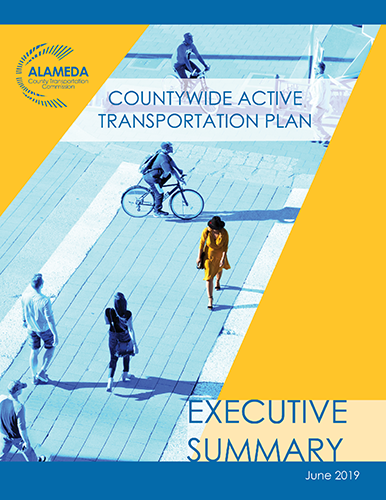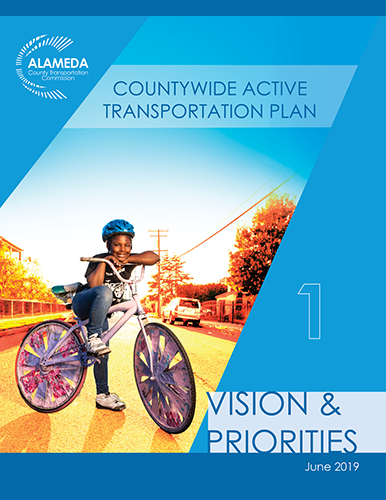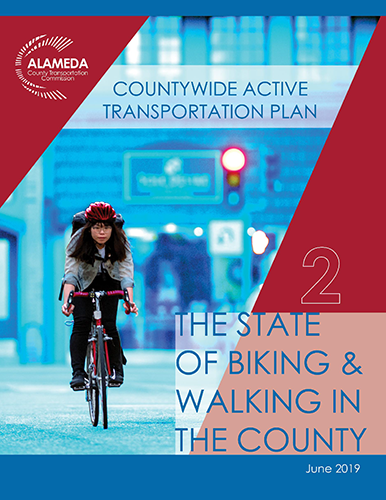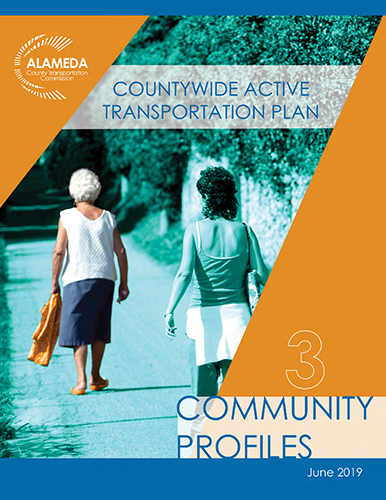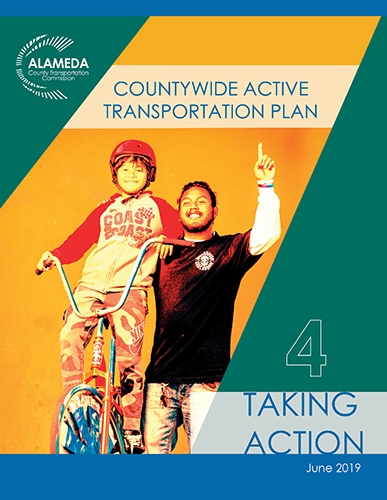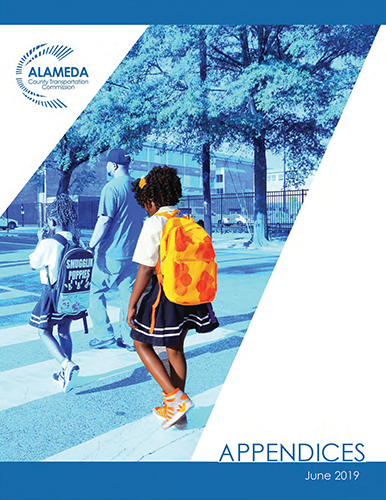Help make walking, biking, and rolling safer and more enjoyable in every community across Alameda County! The 2026 Countywide Active Transportation Plan will set goals and identify needs and recommendations for Alameda County’s active transportation network.
The Plan builds on the priorities and guidelines identified in prior planning, including the current Countywide Transportation Plan (CTP) update. Outreach for the CTP update is active now, including pop-ups and a community survey. We encourage your participation as this outreach will help inform both the CTP and the Active Transportation Plan.
The Active Transportation Plan will also build on the prior Countywide Active Transportation Plan (found below) adopted in 2019 and incorporate the 2022 Countywide Bikeways Network.
The 2026 Countywide Active Transportation Plan will be guided by four Draft goals, consistent with the adopted CTP Policy Blueprint:
- Safety. Apply the Safe System approach to eliminate fatalities and severe injuries by deterring unsafe speeds and emphasizing investments at the highest-need locations for people walking, biking and rolling.
- Equity. Prioritize facility improvements in underserved communities to enhance equitable and universal access to safe, comfortable active transportation, reducing transportation cost and time burdens for low-income residents and enhancing community health.
- Climate. Promote positive environmental and public health outcomes by investing in connected active transportation networks that reduce car dependence, support sustainable land use, and make biking and walking more convenient and enjoyable for all trip types.
- Economic Vitality. Support a vibrant economy by improving walking, biking and rolling access to commercial districts, employment centers, and regional transportation networks, and by promoting design that integrates active transportation and urban design principles to create lively, connected places.
Major elements of the ATP update include:
- Policy Framework The Plan will identify key policy areas related to walking, biking and rolling in Alameda County within each of the four goals. Policy areas and actions will be refined and developed based on input from Commissioners, partner agency staff and community engagement.
- Engagement We want to hear from residents and community organizations about your experience walking, biking and rolling in Alameda County to help identify how Alameda CTC and its partner local governments can best support these needs. The first round of engagement is underway in coordination with the Countywide Transportation Plan. Please take the community survey or share your experience walking, biking or rolling in your community with this form. Input received will inform both the CTP and ATP update.
- Pedestrian Needs and Recommendations The Plan will review pedestrian needs and priorities in Alameda County to complement the work completed in 2022 on the Countywide Bikeways Network, including an update on the status of that network. The needs assessment will emphasize safety, access to and within Transit Oriented Communities; barriers to active transportation; and major trail needs, including how these interact with streets and highways.
- Safe System Academy Building on the successful Bikeways Academy conducted as part of the Countywide Bikeway Network, Alameda CTC plans to conduct technical trainings for local city and agency staff and develop resources for pedestrian facility design and maintenance challenges.
Development of the ATP includes three rounds of public engagement beginning with the outreach conducted in partnership with the CTP in summer 2025. A second round of engagement focused on sharing recommended active transportation strategies and priorities is planned for early 2026. A final round of engagement to share the draft ATP is anticipated in summer 2026.
For more information, please contact ctp@alamedactc.org or Aleida Andrino-Chavez (aandrino-chavez@alamedactc.org).
- Countywide Bikeways Network Map The Alameda County Transportation Commission has historically invested in many different types of transportation networks including: freight rail, transit, freeway and highway networks. In May, 2022 the Commission adopted the 400-mile Countywide Bikeways Network. The network creates a new vision for a cohesive, consistent, and connected network of high-quality bicycle facilities throughout Alameda County.
- All Ages and Abilities Policy The Alameda CTC All Ages and Abilities Policy, approved December 2022, sets the highest expectation for safety and comfort on the Countywide Bikeways Network to ensure people of all ages and physical abilities are safe and feel safe walking, biking, rolling, and riding transit. The policy also encourages a planning framework that prioritizes transit throughout the network and acknowledges the complicated nature of corridor planning and multimodal tradeoffs. It also conforms to the Metropolitan Transportation Commission’s policy requiring projects on the regional Active Transportation Network (of which the Countywide Bikeways Network is a subset) applying for regional discretionary transportation funding or support to incorporate design principles based on the National Association of City Transportation Officials (NACTO) Contextual Guidance for Selecting All Ages and Abilities Bikeways. The All Ages and Abilities Policy does not apply to projects funded or submitted for funding prior to the approval of the policy by the Commission in December 2022.
- Design Guide To achieve a truly safe and comfortable network, Alameda CTC has further articulated Countywide Bikeways Design Expectations, that identify more specific design principles and parameters meant to advance high-quality bikeways. To help jurisdictions meet the Design Expectations, Alameda CTC maintains an online design resource with strategies pulled from design best practices and guidance.
- Bikeways Academy As part of the implementation of the Countywide Bikeways network, Alameda CTC is conducting a series of technical trainings and information exchanges for local jurisdiction and agency staff. This Bikeways Academy has included a leadership-level workshop, technical sessions on Design Fundamentals and Phased Implementation, and white papers on Phasing and Implementation Strategies. All session materials and white papers are on the Bikeways Academy website.
PLAN STRUCTURE
The plan is divided into five parts, including a two-part appendices, all of which can be accessed below:2012 Bicycle and Pedestrian Plans
The Countywide Bicycle and Pedestrian Plans were adopted in October 2012 by the Alameda CTC Commission. The plans and plan maps can be viewed here: Vision System Maps only: North | Central | South | East Vision Network Maps only: North | Central | South | East2001 and 2006 Bicycle and Pedestrian Plans
- Metropolitan Transportation Commission Complete Streets Program
- Metropolitan Transportation Commission Complete Streets Policy (Adopted March 2022)
- Metropolitan Transportation Commission Complete Streets Checklist
- Regional Active Transportation Plan
- Regional Active Transportation Network
- Complete Streets Webinar Series

- 2024 Manual County Summary Data
- 2022 Manual Count Summary Data
- 2020 Manual Count Summary Data
- 2018 Manual Count Summary Data
- Map of Manual Count Locations: North | Central | South | East
- 2002-2012 Manual Count Report
- 2002-2011 Manual Count Report
- 2002-2010 Manual Count Report
- 2024 Raw Data
- 2022 Raw Data
- 2020 Raw Data
- 2018 Raw Data
- 2017 Raw Data
- 2016 Raw Data
- 2014 Raw Data
- 2013 Raw Data
- 2012 Raw Data
- 2011 Raw Data
- 2010 Raw Data


